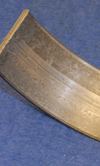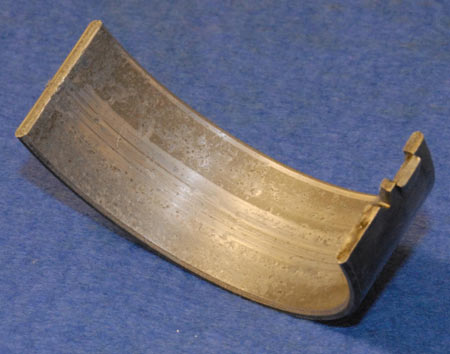Dirty talk
 It's an interesting but nevertheless slightly surprising fact that the vast majority of premature bearing failures in engines are as a direct consequence of the presence of dirt. Such were the conclusions of a report I read recently, and while lack of lubrication, misalignment, overloading and corrosion all figured in the findings, well over 50% of all bearing-related engine failures recorded were put down to foreign bodies in the lubrication system.
It's an interesting but nevertheless slightly surprising fact that the vast majority of premature bearing failures in engines are as a direct consequence of the presence of dirt. Such were the conclusions of a report I read recently, and while lack of lubrication, misalignment, overloading and corrosion all figured in the findings, well over 50% of all bearing-related engine failures recorded were put down to foreign bodies in the lubrication system.
Now before we start reading too much into it, this was a survey conducted by an aftermarket bearing manufacturer, and presumably included a range of internal combustion engines of varying age and condition requiring some form of repair, and probably excluded most race engines. Nevertheless, even in a clinically clean build environment, upon stripping an engine it is surely a dishonest person who has never seen evidence of any dirt in the bearings. Fine dust from unfiltered air, small metallic particles from the piston ring or cylinder bore - even the odd grain of sand from the casting process - all may be regularly present, and all eventually lead to scuffing in the bearings, depending of course on the size of the particle and ultimately whether or not they are trapped by the oil filter. In the selection of any bearing material, therefore, it won't surprise you to hear that this almost inevitable presence of dirt features very highly.
Scuffing in a bearing is simply the cause of localised welding or 'pick-up' between the asperities on the surfaces of the journal and the bearing. It's caused when a foreign particle, larger than the minimum oil thickness, becomes lodged between the surfaces and is embedded into the bearing surface; the bearing alloy moves to form a raised lip around the particle, retaining the particle in the crater thus produced. If metal-to-metal contact between this lip and the shaft surface occurs then damage to the rest of the bearing surface could result, with eventual seizure a possibility. The characteristic to resist this scuffing is referred to as the 'embeddability' of a bearing, and depends on two factors - compatibility and conformability of the materials used.
Compatibility is the ability of the bearing material to resist localised, solid-phase welding. For this, the adhesive component of the friction during the contact with the journal needs to be low. Conformability, on the other hand, is the ability of the bearing material to move and conform to the shape of the shaft and all the minor imperfections including any dirt that may present.

Conformability is therefore a function of the softness of the material and the thickness of the layer on the backing shell. But soft materials as a rule do not support high loads, so the trick of the bearing designer is therefore to seek a compromise, balancing the trade-off between load-carrying capacity (which requires strength, particularly that in fatigue) and embeddability of the material or its softness.
Lead, perhaps the softest of all engineering materials along with its neighbour in the Periodic Table, tin, therefore make excellent bearing surfaces when the loads are low. Babbitt metals containing lead and tin are a perfect example, and are still preferred in many pre-war race engine applications. For higher dynamic loads, and when bonded to a steel backing shell for strength, copper (in the form of a lead bronze, with its ability to disperse heat) is still favoured for more recent competition engines, but is mixed with a sizeable portion of lead to give it a certain amount of embeddability. Increasing the amount of lead reduces the load-carrying capacity but improves the embeddability - essential for a good bearing. So while a commonly used competition lead-bronze bearing at 14-20% lead has a 30% higher load-carrying capacity, its sister material at 20-26% is considered to be the better bearing.
So even in the cleanest of environments you can't afford to ignore the dirt.
Fig. 1 - Evidence of scuffing (and much more)
Written by John Coxon